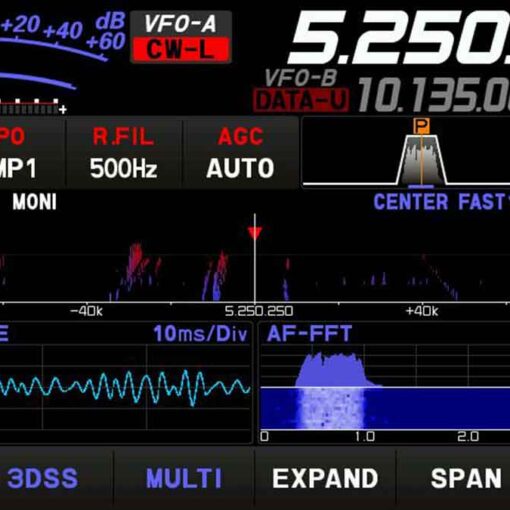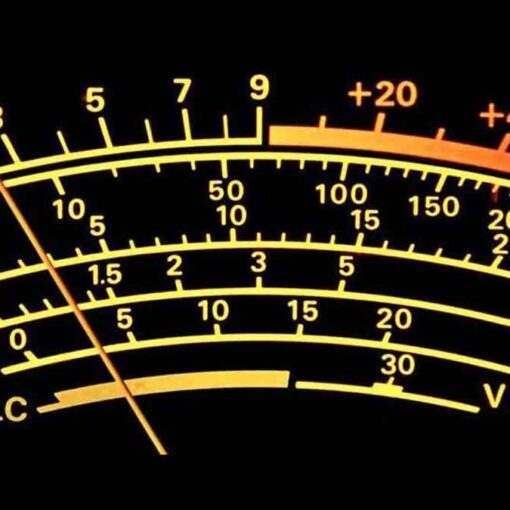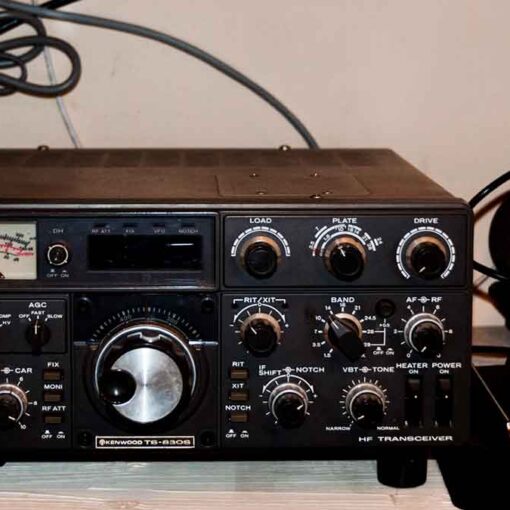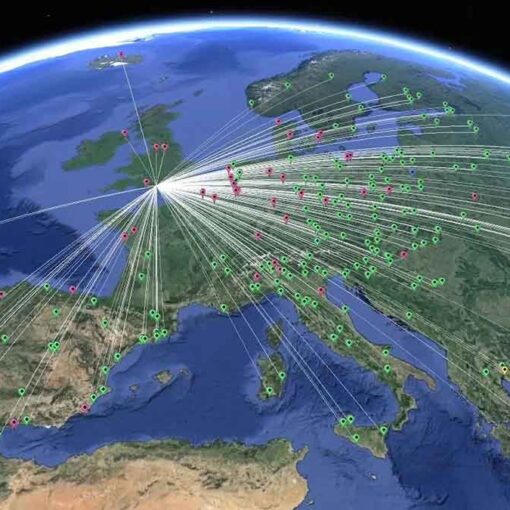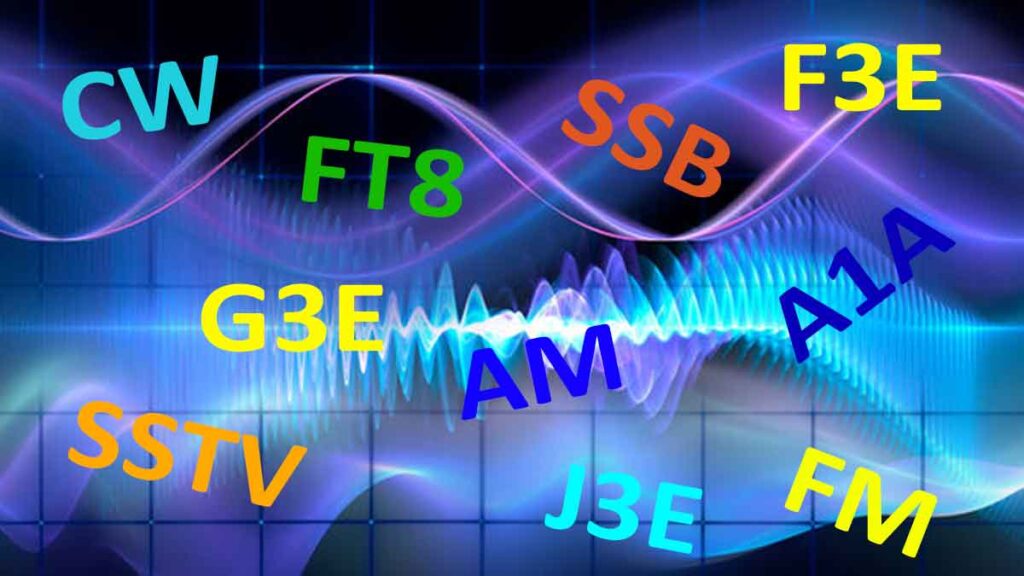
Emission classification
Emissions are classified according to the mode of operation and the required bandwidth. A minimum of three symbols are used to indicate their main characteristics.
First symbol – type of modulation of the main carrier;
Second symbol – carrier type;
Third character – type of transmitted information;
Note: the fourth and fifth characters are added for the needs of the ITU Radio Regulations and are not mandatory.< /em>
Fourth character – details of the signal;
Fifth character – type of multiplexing
First character – base carrier modulation type:
- N – unmodulated carrier;
- A – amplitude modulation with two sidebands;
- H – amplitude modulation with one sideband and full carrier;
- R – amplitude modulation with one sideband and reduced/variable carrier;
- J – amplitude modulation with suppressed carrier;
- B – amplitude modulation with independent sidebands;
- C – amplitude modulation with rudimentary sideband;
- F – frequency modulation;
- G – phase modulation;
Note: when frequency modulation (F) is noted, phase modulation (G) is also applicable.
- D – joint amplitude and frequency-phase modulation;
- P – sequence of unmodulated pulses;
- K – pulse modulation;
- L – amplitude-pulse modulation;
- M – phase or time-pulse modulation;
- Q – frequency-phase pulse modulation;
- V – combined modulation;
- W – other cases where the carrier is modulated simultaneously or sequentially in amplitude, frequency, phase and/or pulse;
- X – all other cases.
Second character – type of main carrier:
- 0 – no modulating signal;
- 1 – one channel containing analog or digital information without using a modulating subcarrier, with the exception of time-pulse multiplexes;
- 2 – one channel containing analog or digital information using a modulating subcarrier, excluding time-pulse multiplexes;
- 3 – one channel containing analog information;
- 7 – two or more channels containing analog or digital information;
- 8 – two or more channels containing analog information;
- 9 – composite system with one or more channels containing analog or digital information together with one or more channels containing analog information;
- X – other cases.
Third character – type of transmitted information
- N – no information transmitted;
- A – auditory telegraphy;
- B – automatically accepted telegraphy;
- C – fax;
- D – data transmission, telemetry, remote control;
- E – telephony;
- F – television or video;
- W – combination of the above;
- X – other cases.
Fourth character – signal details:
- A – two-position code with elements of different number or duration;
- B – two-position code with elements of the same number or duration without error correction;
- C – two-position code with elements of the same number or duration with error correction;
- D – a four-position code in which each position represents an element of the signal (one or more bits);
- E – multi-position code in which each position represents an element of the signal (one or more bits);
- F – multi-position code in which each position represents a symbol element;
- G – sound for monophonic radio broadcasting;
- H – sound for stereo or quadraphonic radio broadcasting;
- J – sound for commercial needs (except for the next two categories);
- K – sound for commercial needs with frequency inversion or band separation;
- L – sound for commercial needs with independent frequency modulated control signals;
- M – monochrome signal;
- N – color signal;
- W – combination of the above;
- X – other cases.
Fifth symbol – multiplexing:
- N – no multiplexing;
- C – code multiplexing;
- F – frequency multiplexing;
- T – time multiplexing;
- W – combination of frequency and time multiplexing;
- X – another type of multiplexing.
Practical table for radio amateurs
A1 – Amplitude modulation with two sidebands and an unmodulated carrier
A1A – amplitude CW audio telegraphy with two sidebands
A1B – amplitude CW telegraphy for automatic reception with two sidebands
A1C – Amplitude FAX facsimile with two sidebars
A1D – amplitude data transmission, telemetry, telecommands with two sidebands
A2 – Amplitude modulation with two sidebands with a modulated carrier
A2A – amplitude CW telegraphy for aural reception with a modulated carrier
A2B – amplitude CW telegraphy for automatic reception with a modulated carrier
A2C – Amplitude FAX facsimile with modulated carrier
A2D – amplitude data transmission, telemetry, telecommands with modulated carrier
A3 – Two sidebands (DSB) with analogue information
A3C – Single Channel DSB FAX Facsimile
A3E – Single Channel DSB AM Telephony (AM Sound Broadcasting)
F1 – Frequency modulation without modulated carrier
F1A – FM CW carrierless aural reception telegraphy
F1B – FM (FSK) RTTY, SITOR-A, carrierless automatic receiving telegraphy
F1C – FM FAX facsimile without carrier
F2 – Frequency modulation with modulated carrier
F2A – FM CW telegraphy for aural reception with a carrier
F2C – FM FAX facsimile with carrier
F2D – FM (FSK) PACKET data transmission, telemetry, carrier telecommands
F3 – Frequency modulation of analog information
F3C – FM FAX Facsimile
F3E – FM telephony (FM sound radio broadcasting)
F3F – FM SSTV Television (Video)
G3 – Phase modulation of analog information
G3C – FM FAX Facsimile
G3E – FM Telephony (including sound radio broadcasting)
G3F – FM ATV, SSTV Television (video)
J2 – One sideband suppressed carrier (SSB) using modulated
serving
J2A – Single-band CW telegraphy with modulated carrier for aural reception
J2B – Single Band CW Telegraphy with Modulated Carrier for Automatic Reception
J2C – Single Band FAX Modulated Carrier Facsimile
J2D – Single-band Clover, data transmission, telemetry, modulated carrier telecommands
J3 – One suppressed carrier (SSB) sideband for analog information
J3C – SSB FAX Facsimile
J3E – SSB Telephony (including sound radio broadcasting)
J3F – SSB ATV Television (video)
R3 – One sideband with reduced or variable carrier level for analog
information
R3C – SSB FAX Facsimile with reduced carrier
R3E – Reduced Carrier SSB Telephony (SSB Audio Broadcasting)
